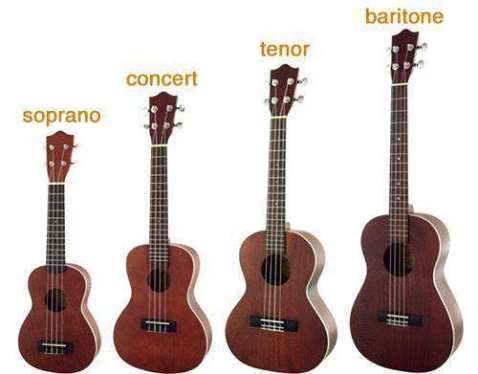
With its chunk-a-chunk sound, whispery nylon strings, and diminutive body, the ukulele is a favorite of the Golden Music community. We carry all the top brands and have just marked down hundreds of prices below internet of our in house brand.
The ukulele is affordable, easy to learn and found everywhere, from our kid's beginning music class, to many shops, to re the hands of some of our favorite musicians. One popular teachers is quoted: “Strum with your index finger or thumb—whatever feels good...There are no ukulele police.”
Despite a long history that once included a reputation as an exotic and highbrow instrument, the ukulele has also endured decades of snubbing from both the pop music scene and the more cultured world of classical music.
ORIGINS
This isn’t the ukulele’s first brush with mass popularity. The instrument, with its four plastic strings and a short neck, originated in Europe and was introduced to Hawaii in 1879 when a Portuguese immigrant named Joao Fernandez jumped off the boat and started strumming and singing with his branguinha (a small guitar-like instrument, sometimes called the machete). The crowd of Hawaiians were so impressed by his fingerboard prestidigitations that they called the instrument “ukulele,” which translates to “jumping flea.” Fernandez and the instrument became a local sensation, and the reigning monarch Kalakaua even learned how to play it. By 1900, the sound of the ukulele was ubiquitous across the Islands, where it was pronounced by Hawaiians as “oo-ku-lay-lay.”
USA POPULARITY The ukulele got its first taste of mainland popularity in the 1900s when the Panama Pacific International Exposition lured over 17 million visitors with hula dance and song at the Hawaii Pavilion. What mainland Americans lacked in understanding of their exotic territory’s music, they made up for in enthusiasm. In 1913, a reporter for the Hartford Courant described how "the wonderfully sweet voices and weird melodies of these ukalele (sic) players strike a plaintive heart-note never to be forgotten once heard.”
The Great Depression provided another gateway for the ukulele. As sales of pianos, accordions, and other pricey instruments soared, saving and scrimping Americans helped boost the ukulele to peak popularity in the 1930s. Indeed, bluegrass music took off during that period as well, and the ukulele is still strongly associated with the string-band phenomenon.
Television offered a golden opportunity for the instrument. In 1950, the popular television host Arthur Godfrey, sporting a Hawaiian shirt, actually gave lessons to millions of viewers right in their living rooms. Plastic ukuleles proliferated— $5.95 each—and 1,700,000 ukulele players were born. Even Americans who'd never picked up an instrument couldn’t help developing a soft spot for the uke when it was played by Bing Crosby, Betty Grable, and Elvis Presley. (Blue Hawaii was Presley’s biggest box-office hit, and the soundtrack was number one on the Billboard charts for 5 months.) For a while it seemed like the ukulele had it all: a high-class reputation on the silver screen and folksy appeal as the people’s instrument.

UKEPOCALYPSE 1060s-1980s
Then came the ukepocalypse. In the 1960s, the guitar took over. It was new, it was rocking, it was electrified. The kids and teens wanted to make the sounds of Elvis Presley and Chuck Berry. “If a kid has a uke in his hand, he’s not going to get in much trouble,” Arthur Godfrey had said, apparently unaware that he'd put his finger on the uke’s fatal weakness.
Then, decades later, a new generation of musicians jaded by electric guitars and mostly unaware of either the uke’s squareness or its Tiny-Tim-related disrepute began to tinker with the instrument. Beginning in the 1980s, some rock ‘n’ rollers began to introduce the ukulele—in some instances, to sound a note of folksy authenticity; in others, to explore more intimate, spontaneous and personal aspects of music making. Paul McCartney strummed one on his 2002 tour as a tribute to fellow Beatle George Harrison, a serious ukulele player and a devotee of the British music hall ukulele tradition. Harrison later gave his blessing to the ukulele revival by penning an introduction to Jumpin’ Jim (Beloff)’s 60s Uke-In Songbook: “
Everybody should have and play a uke. It’s so simple to carry with you and it is one instrument you can’t play and not laugh! It’s so sweet and also very old.”

